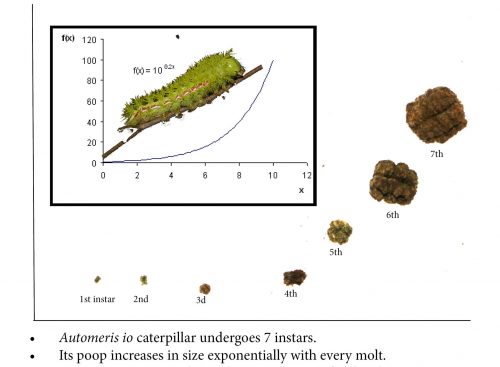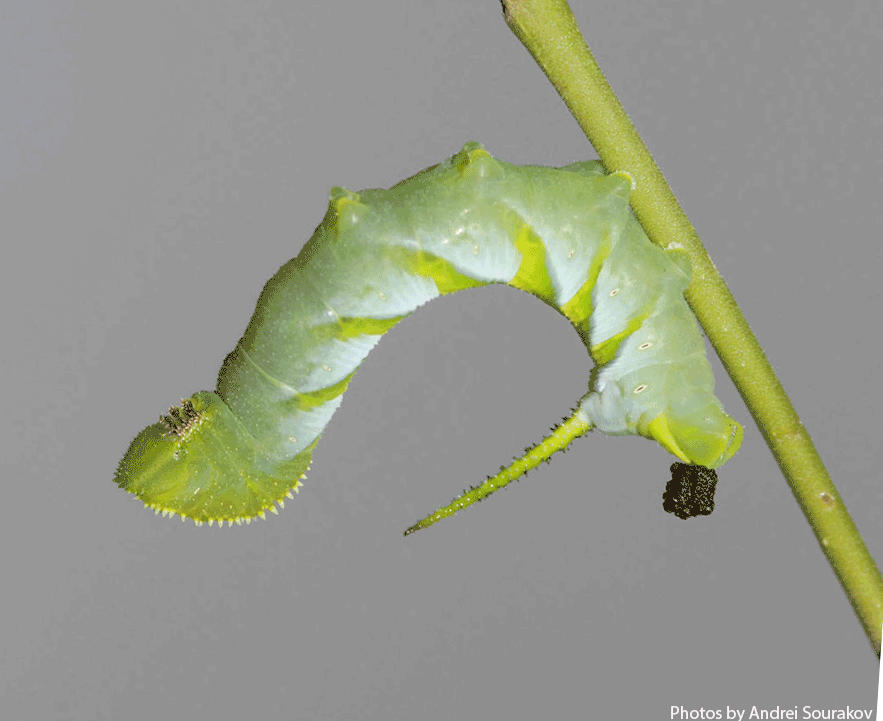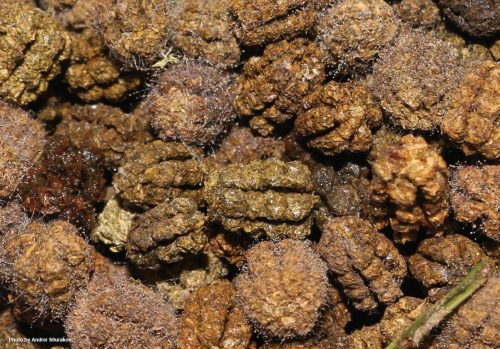When Hercules was tasked by Eurystheus with cleaning up after King Augeas’ cattle in a single day, he had his work cut out for him. But Hercules, being not only a superhero but also a wiz, figured out a painless solution and diverted a nearby river so that its waters would do the work for him. All at once, the manure was gone. It was not nice for the villagers or the fish downstream, but otherwise a sound move that took care of the business without excessive shoveling of “black gold,” as bags going for $5.27 at Home Depot are now known.

I wish my life during the caterpillar rearing season – usually starting in April and going through September – was that easy. Over the last 15 years, my colleagues at the museum and I have authored several dozen studies on moths, which have involved caterpillar rearing on a massive scale. These studies used different moths and were designed to answer different questions, but they all had one thing in common: lots of caterpillar rearing with lots of poop as a byproduct. So, one becomes a sort of professional caterpillar poop remover.
Caterpillars develop for a month, sometimes for two, during which I have to clean poop in their wake almost daily, sometimes at night, after work. And once I am done for the day, I can be sure that they will poop some more tomorrow. So, Sisyphus, the chap who had to roll the rock uphill only for the rock to roll downhill, day after day, year after year, would understand me much better than Hercules, whose attention span was shortened by his constantly changing tasks.

I keep my caterpillars in bags that, akin to baby diapers, need to be frequently changed, or else there is a risk of mold or infection and then one can say goodbye to the experiment one had planned. When discarding old food, one has to take care not to throw the “moth babies” away with the bath water – old branches and leaves need to be examined carefully for caterpillars before being discarded.

New leaves need to be added frequently, as a mature caterpillar easily defoliates an entire branch in a day. Five mature imperial moth caterpillars, for example, will go through an industrial-sized garbage bag of food in a couple of days. So, the result, when working with them or with Luna moths who also like Liquidambar styraciflua (a lovely scientific name for the sweetgum), is that one is always scouting for sweetgum trees with lower branches or young saplings that can be sacrificed in the name of science.
This video shows a routine change of caterpillar hostplant material, followed by a close-up look at various Florida caterpillars.
Leaves also frequently harbor spores of caterpillar-killing fungi. The worst thing about these fungi is that they manifest themselves at the end of larval development: one might end up feeding a caterpillar for two months only for it to end up as a sack full of spores. To prevent such tragic denouements, leaves need to be washed, preferably with a light bleach solution or soap, then dried on stretched ropes, or wherever one can hang them.
Caterpillar droppings are being thrown away right now, at best fertilizing flowers in my backyard. Perhaps, as with livestock farming, one day we will discover that caterpillar poop is not a waste to be discarded but “black gold,” and we will be able to finance our research by bagging and selling it to … very small farmers 😊.
I find nothing more meditative than watching a caterpillar eat, in this case, a rustic sphinx moth caterpillar I reared last year.